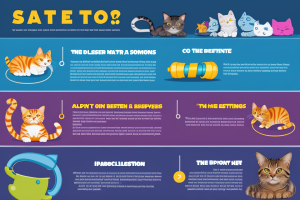What is the Meaning Behind Cat Pictures? A Comprehensive Guide to Cat Photography

Toxoplasmosis is a parasitic infection caused by the Toxoplasma gondii parasite. It can affect humans and animals alike, and is commonly found in contaminated soil, water, and food. While most people experience only mild symptoms or none at all, toxoplasmosis can be serious for those with weakened immune systems, such as individuals with HIV/AIDS or those undergoing chemotherapy. In this article, we will explore the effects of toxoplasmosis on humans, including its symptoms, causes, and prevention methods. We will also discuss the potential long-term effects of the infection and how it can impact pregnant women and their unborn children. By understanding toxoplasmosis, we can take steps to protect ourselves and our loved ones from this potentially harmful parasite.
What is Toxoplasmosis?
A brief overview of the parasite and its impact on humans
Toxoplasmosis is a parasitic infection caused by the Toxoplasma gondii parasite. It is a highly prevalent and widespread infection that affects millions of people worldwide. The parasite primarily infects animals, including humans, and its transmission occurs through contact with contaminated feces, soil, or meat that has been contaminated with the parasite.
The impact of toxoplasmosis on humans varies depending on the immune system of the individual. In healthy individuals, the infection may be asymptomatic or cause mild flu-like symptoms. However, in individuals with weakened immune systems, such as those with HIV/AIDS, the infection can cause severe and potentially life-threatening symptoms.
In addition to its impact on human health, toxoplasmosis also has significant economic and public health implications. It can cause reduced productivity and absenteeism in the workplace, as well as increased healthcare costs. In addition, the parasite can have significant impacts on animal health and welfare, particularly in livestock and pets.
Overall, toxoplasmosis is a significant public health concern that requires ongoing research and efforts to prevent and control its transmission.
The life cycle of Toxoplasma gondii
Toxoplasma gondii is a protozoan parasite that can infect a wide range of warm-blooded hosts, including humans. Understanding the life cycle of this parasite is crucial in understanding how it is transmitted and how it can be prevented.
The life cycle of Toxoplasma gondii involves two main hosts: a definitive host and an intermediate host. The definitive host is the final host in which the parasite can sexually reproduce and complete its life cycle. In the case of Toxoplasma gondii, the definitive host is a member of the Felidae family, such as a lion, tiger, or domestic cat.
The intermediate host is an animal that ingests the parasite through contaminated food or water. The parasite then multiplies in the intermediate host’s tissues, and can be transmitted to other animals or humans who consume the infected intermediate host. In the case of Toxoplasma gondii, the intermediate host is usually a small mammal, such as a rodent or rabbit.
The life cycle of Toxoplasma gondii can also involve a sexual stage, where the parasite can reproduce by exchanging genetic material with another parasite of the opposite sex. This sexual stage occurs in the definitive host, and is necessary for the parasite to complete its life cycle.
Overall, understanding the life cycle of Toxoplasma gondii is important in understanding how it is transmitted and how it can be prevented. By knowing the hosts involved in the parasite’s life cycle, humans can take steps to avoid becoming infected, such as handling raw meat and avoiding contact with cat feces.
How is Toxoplasmosis transmitted to humans?
Toxoplasmosis is a parasitic infection caused by the Toxoplasma gondii parasite. It is a common infection worldwide and can affect a wide range of animals, including humans. The transmission of toxoplasmosis to humans can occur through several different routes, including:
- Consuming contaminated food or water: Toxoplasma gondii can contaminate a variety of foods, including meat, dairy products, and fruits and vegetables. This can happen if the food comes into contact with cat feces that contain the parasite. The parasite can also contaminate water sources, such as wells or swimming pools.
- Eating undercooked meat: Toxoplasma gondii can infect the muscle tissue of animals, including pigs, sheep, and cows. If meat is not cooked properly, the parasite can survive and be consumed by humans.
- Handling contaminated soil or gardening: Toxoplasma gondii can infect the soil and can be picked up by gardeners who handle contaminated soil. This is more common in areas where there are a lot of cats and where there is poor sanitation.
- Pregnant women transmitting to their fetuses: Pregnant women who become infected with Toxoplasma gondii can transmit the infection to their fetuses, which can result in serious health problems for the baby.
- Rarely, through organ transplant or blood transfusion: In rare cases, toxoplasmosis can be transmitted through organ transplant or blood transfusion from an infected donor.
It is important to take precautions to avoid getting infected with Toxoplasma gondii. This includes washing your hands before and after handling food, avoiding undercooked meat, and wearing gloves when gardening. Pregnant women should also avoid handling soil and other potentially contaminated materials.
Symptoms of Toxoplasmosis
Acute versus chronic infection
When a person contracts toxoplasmosis, the infection can develop in two ways: acute or chronic. The symptoms and severity of the infection depend on whether it is an acute or chronic infection.
Acute infection
An acute infection occurs when a person is newly infected with the Toxoplasma gondii parasite. During this stage, the body’s immune system mounts a response to the parasite, leading to a range of symptoms. Most people with an acute infection will experience mild symptoms, including:
- Fever
- Headache
- Body aches
- Swollen lymph nodes
- Fatigue
- Muscle aches and pains
- Nausea and vomiting
- Eye inflammation (uveitis)
However, some people may experience more severe symptoms, such as encephalitis (inflammation of the brain), which can lead to confusion, seizures, and even death in rare cases.
Chronic infection
A chronic infection occurs when the Toxoplasma gondii parasite remains in the body for an extended period, often for years. During this stage, the parasite can affect various parts of the body, including the brain and other organs. Most people with a chronic infection do not experience any symptoms, but in some cases, it can lead to serious health problems, such as:
- Brain damage
- Blindness
- Muscle weakness
- Memory problems
- Depression and anxiety
- Inflammation of the liver, spleen, and lymph nodes
If left untreated, a chronic infection can lead to severe health problems and even death. However, with proper treatment, the symptoms of a chronic infection can be managed and controlled.
Flulike symptoms and other signs of acute infection
When a person contracts toxoplasmosis, they may experience a range of symptoms that can resemble those of the flu. These flulike symptoms typically appear within a few days to a few weeks after exposure to the parasite. The symptoms may include:
- Body aches and pains
- Sore throat
- Diarrhea
These symptoms usually resolve on their own within a few weeks, but in some cases, they may persist for several months. If you experience any of these symptoms, it is important to see a doctor for proper diagnosis and treatment.
Latent infection and reactivation
Toxoplasmosis, caused by the Toxoplasma gondii parasite, can lead to a latent infection in humans. This means that the parasite remains dormant in the body and doesn’t cause any symptoms. In most cases, a latent infection doesn’t require treatment, as the parasite is kept in check by the immune system.
However, certain factors can trigger the reactivation of the latent infection, leading to symptoms. These factors include:
- Suppressed immune system: People with weakened immune systems, such as those with HIV/AIDS, are more likely to experience reactivation of a latent infection.
- Pregnancy: Pregnant women with a latent infection may experience reactivation, which can pose risks to the developing fetus.
- Stress: Stress can weaken the immune system, making it more likely for a latent infection to reactivate.
- Age: As people age, their immune systems may weaken, increasing the risk of reactivation.
When a latent infection is reactivated, it can cause a range of symptoms, including:
- Flu-like symptoms: Fever, headache, body aches, and swollen lymph nodes.
- Eye problems: Blurred vision, eye pain, and in rare cases, blindness.
- Neurological problems: In rare cases, reactivation can cause issues with memory, behavior, and coordination.
It’s important to note that not everyone with a latent infection will experience symptoms, and many people are unaware they have been infected. However, if you do experience symptoms, it’s crucial to seek medical attention to determine the appropriate course of treatment.
How do the symptoms of Toxoplasmosis compare to those of other diseases?
When it comes to the symptoms of Toxoplasmosis, it is important to note that they can be quite similar to those of other diseases. For example, the symptoms of Toxoplasmosis may resemble those of the flu, as both can include fever, body aches, and fatigue. However, there are some key differences to look out for.
One of the main differences between the symptoms of Toxoplasmosis and those of other diseases is the presence of muscle pain and weakness. This is a common symptom of Toxoplasmosis, but is not typically associated with other diseases such as the flu. Additionally, Toxoplasmosis can cause a rash, which is another symptom that sets it apart from other diseases.
It is also important to note that Toxoplasmosis can be a more severe illness in individuals with weakened immune systems, such as those with HIV/AIDS or those who have undergone chemotherapy. In these cases, the symptoms of Toxoplasmosis may be more severe and could include neurological symptoms such as confusion and difficulty coordinating movements.
Overall, while the symptoms of Toxoplasmosis can resemble those of other diseases, there are key differences to look out for. It is important to seek medical attention if you suspect that you may have Toxoplasmosis, especially if you have a weakened immune system.
Complications of Toxoplasmosis
Rare but serious consequences of infection
While many people recover from toxoplasmosis without any issues, some may experience rare but serious consequences as a result of the infection. These complications can include:
- Toxoplasmic encephalitis: This is a rare but potentially life-threatening condition that occurs when the parasite invades the brain. Symptoms can include headache, fever, confusion, and muscle weakness, and it can lead to serious neurological problems.
- Congenital toxoplasmosis: Pregnant women who contract toxoplasmosis can pass the infection on to their unborn child, leading to serious birth defects or developmental problems.
- Eye infections: Toxoplasmosis can cause infections in the eyes, which can lead to vision loss or blindness if left untreated.
- Liver damage: In rare cases, toxoplasmosis can cause inflammation and damage to the liver.
It is important to seek medical attention if you experience any symptoms of toxoplasmosis, as early treatment can help prevent these serious complications from occurring. Additionally, pregnant women should take extra precautions to avoid contracting toxoplasmosis, as the consequences for their unborn child can be severe.
Congenital toxoplasmosis
Congenital toxoplasmosis occurs when a pregnant woman contracts toxoplasmosis for the first time during pregnancy. This can have serious consequences for the developing fetus. The infection can cross the placenta and infect the fetus, leading to serious health problems.
- Infections during the first trimester are particularly dangerous, as they increase the risk of miscarriage or stillbirth.
- Infections during the second and third trimesters can cause birth defects, such as intellectual disabilities, vision and hearing problems, and abnormalities of the head and face.
- Infections during childhood can also cause problems, such as vision loss and intellectual disabilities.
It is important for pregnant women to take precautions to avoid toxoplasmosis, such as avoiding undercooked meat, washing fruits and vegetables, and covering sandboxes to prevent cats from using them as litter boxes. If a pregnant woman does contract toxoplasmosis, she should seek medical attention immediately to prevent complications in the fetus.
Toxoplasmosis and other medical conditions
Toxoplasmosis can have serious consequences for individuals with weakened immune systems, such as those with HIV/AIDS, cancer, or those taking immunosuppressive drugs. In these cases, the parasite can spread throughout the body and cause serious complications, including:
- Encephalitis: Inflammation of the brain caused by the presence of the parasite in the brain tissue.
- Retinochoroiditis: Inflammation of the eye caused by the presence of the parasite in the retina.
- Pneumonitis: Inflammation of the lungs caused by the presence of the parasite in the lung tissue.
- Myocarditis: Inflammation of the heart muscle caused by the presence of the parasite in the heart tissue.
- Gastrointestinal problems: In severe cases, the parasite can invade the digestive system and cause problems such as ulcers and bleeding.
In addition to these complications, toxoplasmosis can also lead to miscarriage or stillbirth in pregnant women. It is important for individuals with weakened immune systems to take extra precautions to avoid getting infected with the parasite.
Can Toxoplasmosis cause mental health issues?
While the majority of people infected with Toxoplasma gondii do not experience any symptoms, the parasite can have serious consequences for individuals with weakened immune systems, such as those with HIV/AIDS, and for pregnant women. In addition to these well-known complications, recent research has suggested that Toxoplasmosis may also have an impact on mental health.
- Cognitive effects: A study published in the journal Schizophrenia Research found that individuals with latent Toxoplasma infection showed impaired cognitive performance on tests of memory and reaction time compared to those without the infection. The researchers suggested that the parasite may interfere with the functioning of specific brain regions involved in these processes.
- Association with mental disorders: Several studies have reported a link between Toxoplasmosis and an increased risk of developing certain mental health disorders, including schizophrenia and bipolar disorder. A meta-analysis published in the Journal of Clinical Psychiatry found that individuals with a history of Toxoplasma infection were more likely to develop schizophrenia than those without the infection. The exact mechanism behind this association is not yet fully understood, but it may involve changes in brain chemistry or immune system activity triggered by the parasite.
- Role in suicide risk: A study published in the British Journal of Psychiatry found that individuals with a history of Toxoplasma infection were more likely to report suicidal thoughts and attempts than those without the infection. While the study did not establish a causal link between Toxoplasmosis and suicide risk, it suggests that further research is needed to understand the potential mental health implications of this common parasitic infection.
Overall, while more research is needed to fully understand the relationship between Toxoplasmosis and mental health, these studies highlight the potential for the parasite to have far-reaching effects on human health beyond its well-known complications in immunocompromised individuals and pregnant women.
Diagnosis and Treatment of Toxoplasmosis
How is Toxoplasmosis diagnosed?
Toxoplasmosis can be diagnosed through several methods, including:
- Blood tests: Blood tests can detect the presence of Toxoplasma gondii antibodies in the blood, which indicate a past or current infection.
- Imaging tests: Imaging tests such as CT scans or MRI scans may be used to look for signs of infection in the brain or other organs.
- Physical examination: A physical examination may reveal signs of infection, such as swollen lymph nodes or an enlarged liver or spleen.
- Tissue analysis: Tissue analysis may be performed on samples of tissue from affected organs, such as the brain or eyes, to look for signs of infection.
It is important to note that some people may have no symptoms of toxoplasmosis at all, and may only discover they are infected through routine blood tests or other medical examinations. In addition, it is possible for a person to be re-infected with Toxoplasma gondii if they are exposed to the parasite again, even if they have already had toxoplasmosis before.
What are the treatment options for Toxoplasmosis?
The treatment options for Toxoplasmosis are primarily aimed at managing the symptoms and reducing the severity of the infection. The specific treatment approach depends on the severity of the infection and the individual’s overall health. Here are some of the common treatment options for Toxoplasmosis:
- Antiparasitic medications: These medications, such as pyrimethamine and sulfadiazine, are typically prescribed to individuals with a severe infection. They work by killing the parasites that cause the infection.
- Antibiotics: In some cases, antibiotics may be prescribed to treat any secondary bacterial infections that may occur as a result of the parasitic infection.
- Supportive care: For individuals with a mild infection, supportive care may be sufficient. This may include rest, hydration, and over-the-counter pain relievers for any symptoms that may occur.
- Prevention of re-infection: For individuals who have already had Toxoplasmosis, it is important to take steps to prevent re-infection. This may include avoiding contact with cat feces, handling raw meat carefully, and washing hands frequently.
It is important to note that treatment for Toxoplasmosis may not always be effective, and the infection may persist in some individuals. Therefore, it is crucial to seek medical attention as soon as possible if you suspect that you may have been infected with Toxoplasmosis.
Can Toxoplasmosis be cured?
While the prospect of curing a disease can bring relief to many, the answer to whether toxoplasmosis can be cured is not always straightforward. Toxoplasmosis is a parasitic infection caused by the Toxoplasma gondii protozoan, which can infect humans and animals alike. The severity of the infection can vary widely, from mild flu-like symptoms to severe neurological disorders, depending on the individual’s immune system and the stage of the infection.
The good news is that for most healthy individuals, the immune system can successfully fight off the infection, and the parasite can be eliminated from the body. However, in individuals with weakened immune systems, such as those with HIV/AIDS, the infection can persist and lead to more severe symptoms.
For pregnant women, who are more susceptible to severe complications from toxoplasmosis, prompt diagnosis and treatment are crucial to prevent the infection from affecting the developing fetus. If a pregnant woman contracts toxoplasmosis, medical professionals may recommend medication to reduce the risk of transmission to the fetus.
If left untreated, toxoplasmosis can have serious consequences, including brain damage and blindness. Therefore, it is essential to seek medical attention if you suspect you may have contracted the infection. Your doctor can perform a blood test to diagnose the infection and recommend the appropriate treatment.
Treatment for toxoplasmosis typically involves a combination of medication and rest. Antibiotics such as spiramycin or pyrimethamine/sulfadiazine can help to reduce the severity of the infection and eliminate the parasite from the body. However, these medications may not be effective in all cases, particularly in individuals with weakened immune systems.
In summary, while toxoplasmosis can be cured in many cases, it is essential to seek medical attention promptly to prevent severe complications. If you have any concerns about toxoplasmosis, talk to your doctor to determine the best course of action for your individual situation.
How can I prevent reinfection?
Reinfection with Toxoplasma gondii can occur in individuals who have previously been infected and have developed antibodies against the parasite. In order to prevent reinfection, it is important to take certain precautions. Here are some ways to reduce the risk of reinfection:
- Avoid handling cat feces: Toxoplasma gondii can be found in the feces of infected cats, so it is important to avoid handling cat feces if possible. If you must handle cat feces, wear gloves and dispose of them properly.
- Cook meat thoroughly: Toxoplasma gondii can be found in undercooked meat, so it is important to cook meat thoroughly before eating it. This includes pork, lamb, and venison.
- Wash fruits and vegetables: Toxoplasma gondii can be found in soil and water, so it is important to wash fruits and vegetables thoroughly before eating them. This can help to remove any parasites that may be present.
- Avoid exposure to other animals: Toxoplasma gondii can be found in a variety of animals, including rodents, birds, and reptiles. Avoid handling these animals if possible, and wear gloves if you must handle them.
- Seek medical treatment: If you have a weakened immune system, it is important to seek medical treatment if you develop symptoms of toxoplasmosis. Your doctor may prescribe medication to help clear the infection and prevent reinfection.
By following these precautions, you can reduce your risk of reinfection with Toxoplasma gondii and prevent the development of serious health problems.
Prevention of Toxoplasmosis
Tips for avoiding infection
- Avoid contact with cat feces: Toxoplasma gondii is found in the feces of infected cats, so it’s essential to avoid contact with cat feces when gardening or otherwise handling soil. If you must handle soil, wear gloves and wash your hands thoroughly afterwards.
- Cook meat thoroughly: Toxoplasma gondii can be found in undercooked meat, especially pork, lamb, and venison. Cooking meat to its proper temperature will kill any parasites.
- Wash fruits and vegetables: Toxoplasma gondii can also be found on the surface of some fruits and vegetables, so it’s important to wash them thoroughly before eating.
- Handle and store food safely: Keep raw meat separate from other foods to prevent cross-contamination. Wash hands, utensils, and surfaces with soap and water before and after handling raw meat.
- Avoid getting infected through contaminated water: Toxoplasma gondii can be found in contaminated water, so it’s important to only drink water from a safe source.
- Practice good hygiene: Wash your hands frequently with soap and warm water, especially after handling cats, their litter, or contaminated soil.
- Cover sandboxes: If you have a sandbox, cover it when not in use to prevent cats from using it as a litter box.
- Seek medical attention: If you think you may have contracted toxoplasmosis, seek medical attention immediately. Early treatment can help prevent serious complications.
Who is at risk for Toxoplasmosis?
Toxoplasmosis is a parasitic infection caused by the Toxoplasma gondii parasite. It is estimated that over 30% of the global population is infected with this parasite, but not everyone experiences symptoms. Toxoplasmosis can cause serious health problems in individuals with weakened immune systems, such as those with HIV/AIDS, and in pregnant women, as it can cause severe birth defects in their unborn children.
However, it is important to note that toxoplasmosis is not only a risk for these individuals. Anyone can get infected with Toxoplasma gondii, and the infection can be transmitted through contact with contaminated food, water, or soil, as well as through contact with infected cat feces.
Therefore, it is important for everyone to take precautions to prevent toxoplasmosis. This includes:
- Cooking meat thoroughly before consumption
- Washing fruits and vegetables before eating
- Avoiding drinking untreated water from sources such as streams or wells
- Wearing gloves and a mask when gardening or handling soil
- Covering sandboxes to prevent cats from using them as a litter box
- Avoiding touching or handling wild or stray cats
- Keeping cats indoors and away from any contaminated soil or sand
- Seeking medical attention if experiencing symptoms of toxoplasmosis such as fever, muscle aches, and swollen lymph nodes.
Can I get Toxoplasmosis from eating contaminated food?
Toxoplasmosis is a parasitic infection caused by the Toxoplasma gondii parasite. It can be contracted through various means, including contaminated food. In this section, we will explore the risks associated with getting Toxoplasmosis from eating contaminated food.
Toxoplasma gondii parasite can infect various animals, including pigs, sheep, and cows, which are commonly used for food production. When these animals are infected with the parasite, they can excrete the parasite in their feces, which can then contaminate the soil and water, making it a potential source of infection for humans.
The risk of contracting Toxoplasmosis from eating contaminated food depends on several factors, including the type of food, the cooking method, and the stage of the parasite’s life cycle. Raw or undercooked meat, particularly pork, lamb, and beef, are the most common sources of infection. However, other foods, such as unpasteurized dairy products, contaminated fruits and vegetables, and even water, can also be sources of infection.
It is essential to cook meat thoroughly to eliminate the risk of infection. Pork should be cooked to an internal temperature of at least 145°F (63°C), while beef, lamb, and poultry should be cooked to at least 160°F (71°C). Additionally, washing fruits and vegetables thoroughly and cooking them before consumption can help reduce the risk of infection.
In conclusion, eating contaminated food is a significant risk factor for contracting Toxoplasmosis. Taking precautions when handling and cooking meat, washing fruits and vegetables, and avoiding unpasteurized dairy products can help reduce the risk of infection.
How can I reduce the risk of Toxoplasmosis in my home?
There are several ways to reduce the risk of Toxoplasmosis in your home. Some of these include:
- Covering sandboxes and keeping them away from cats
- Washing hands and utensils after handling raw meat
- Using a vacuum cleaner with a HEPA filter
- Freezing meat for at least 24 hours before cooking
- Covering litter boxes and changing the litter regularly
- Keeping cats indoors and away from other animals
- Cleaning and disinfecting surfaces that have come into contact with cat feces
By following these simple steps, you can greatly reduce the risk of contracting Toxoplasmosis in your home.
Research and Future Developments
Current state of knowledge on Toxoplasmosis
- Overview of Toxoplasmosis
Toxoplasmosis is a parasitic infection caused by the Toxoplasma gondii parasite. It can infect a wide range of warm-blooded hosts, including humans, but it is primarily found in cats and other felines. The parasite can be transmitted to humans through contaminated food or water, as well as from handling cat feces. - Symptoms and Complications
In most cases, toxoplasmosis does not cause any symptoms in humans. However, in some cases, it can lead to severe complications, particularly in individuals with weakened immune systems. These complications can include inflammation of the eye, brain damage, and even death. - Diagnosis and Treatment
Diagnosing toxoplasmosis can be challenging, as many of the symptoms are similar to those of other diseases. A blood test can detect the presence of antibodies to the parasite, which can indicate a past infection. Treatment for toxoplasmosis typically involves medication to reduce the severity of symptoms and prevent further complications. - Prevention
The best way to prevent toxoplasmosis is to avoid handling cat feces and to thoroughly cook meat before consumption. It is also important to wash all fruits and vegetables before eating them. - Future Developments
Researchers are constantly working to improve our understanding of toxoplasmosis and to develop new treatments for the disease. In recent years, there has been a focus on developing vaccines and therapies that target the parasite directly. Additionally, advances in genomics and biotechnology are helping scientists to better understand the biology of the parasite and how it interacts with its host.
What questions remain unanswered about Toxoplasmosis?
Despite the significant progress made in understanding Toxoplasmosis, there are still several unanswered questions that researchers are actively exploring. These questions pertain to various aspects of the disease, including its transmission, diagnosis, treatment, and long-term effects on human health.
Transmission of Toxoplasmosis
One of the primary areas of research is the transmission of Toxoplasmosis. While it is well-established that the parasite can be transmitted through contaminated food and water, the exact mechanisms by which it infects humans are not fully understood. Additionally, the role of other environmental factors, such as soil and animal waste, in the transmission of the disease is not yet clear.
Diagnosis of Toxoplasmosis
Another area of ongoing research is the development of more accurate and reliable diagnostic tests for Toxoplasmosis. Current diagnostic methods, such as blood tests and imaging studies, can be invasive and may produce false-positive or false-negative results. Researchers are exploring new technologies, such as biomarkers and genetic testing, to improve the accuracy and reliability of Toxoplasmosis diagnosis.
Treatment of Toxoplasmosis
There is also a need for more effective treatments for Toxoplasmosis. While current treatments, such as antibiotics and antiparasitic drugs, can be effective in reducing the symptoms of the disease, they may also have severe side effects and may not be effective in all cases. Researchers are exploring new therapies, such as immunotherapy and targeted drug delivery, to improve the effectiveness and safety of Toxoplasmosis treatment.
Long-term Effects of Toxoplasmosis
Finally, there is a need for more research into the long-term effects of Toxoplasmosis on human health. While the acute symptoms of the disease may resolve on their own, there is evidence to suggest that the parasite may persist in the body and cause long-term health problems, such as neurological disorders and cancer. Researchers are exploring the mechanisms by which the parasite may affect the body over time and the potential long-term health consequences of Toxoplasmosis.
What research is being done to better understand and treat Toxoplasmosis?
Toxoplasmosis is a complex disease with a range of effects on humans and animals. The parasite responsible for the disease, Toxoplasma gondii, is one of the most prevalent parasites in the world, affecting millions of people and animals every year. Researchers are working to better understand the biology of the parasite and the disease it causes, as well as to develop new treatments and prevention strategies.
One area of active research is the study of the immune response to Toxoplasma infection. Researchers are investigating how the immune system interacts with the parasite and how this interaction can be modulated to improve treatment outcomes. Another area of focus is the development of new drugs and therapies that can target the parasite directly, bypassing the limitations of current treatments.
Researchers are also exploring the role of environmental factors in the transmission of Toxoplasma, such as the presence of contaminated soil or water. This knowledge could be used to develop new prevention strategies, such as improving sanitation and hygiene practices in areas where the parasite is prevalent.
Finally, researchers are investigating the long-term effects of Toxoplasma infection on human health, including the potential link between the parasite and the development of certain diseases such as schizophrenia. This research could have important implications for public health policy and prevention strategies.
Overall, research into Toxoplasmosis is a rapidly evolving field, with new discoveries and advances being made all the time. As our understanding of the disease and the parasite that causes it grows, so too does our ability to prevent and treat this important health threat.
What could the future of Toxoplasmosis research look like?
As the field of medicine and science continues to advance, researchers are exploring new ways to better understand and combat the parasitic infection caused by Toxoplasma gondii. Some of the areas that researchers are currently focusing on include:
- Investigating the role of environmental factors in the transmission of the parasite
- Examining the long-term effects of chronic infection on human health
- Developing new treatments and therapies for toxoplasmosis
- Exploring the potential for a vaccine against the parasite
- Investigating the link between toxoplasmosis and other diseases, such as cancer and neurological disorders
One promising area of research is the development of new treatments for toxoplasmosis. Current treatments rely on anti-parasitic drugs, which can be toxic and have serious side effects. Researchers are exploring new approaches, such as targeted drug delivery systems and immunotherapy, that could provide more effective and safer treatments for the infection.
Another area of focus is the development of a vaccine against toxoplasmosis. While there are currently no licensed vaccines available, researchers are working on developing a safe and effective vaccine that could protect against the parasite. This would be a major breakthrough in the fight against toxoplasmosis, and could have a significant impact on public health.
In addition to these areas of research, scientists are also investigating the potential link between toxoplasmosis and other diseases. There is growing evidence to suggest that chronic infection with the parasite may increase the risk of developing certain cancers and neurological disorders. Further research in this area could provide important insights into the potential public health implications of toxoplasmosis.
Overall, the future of toxoplasmosis research looks promising, with many exciting developments on the horizon. As researchers continue to uncover new information about the parasite and its effects on human health, they hope to develop new treatments and therapies that could improve the lives of those affected by the infection.
FAQs
1. What is toxoplasmosis?
Toxoplasmosis is a parasitic infection caused by the Toxoplasma gondii parasite. It can infect humans and animals, including cats and other warm-blooded creatures. The parasite is found in contaminated soil, water, and raw meat, and can also be transmitted through contact with infected cat feces.
2. How does someone get infected with toxoplasmosis?
Toxoplasmosis can be contracted by ingesting contaminated food or water, handling contaminated soil or animal waste, or coming into contact with infected cat feces. Pregnant women and individuals with weakened immune systems are at a higher risk of developing severe symptoms if infected.
3. What are the symptoms of toxoplasmosis?
Most people infected with toxoplasmosis do not experience any symptoms, and the infection usually resolves on its own within a few weeks. However, some people may experience flu-like symptoms, swollen lymph nodes, muscle aches, and fatigue. In rare cases, toxoplasmosis can cause more serious complications, such as inflammation of the brain or eyes.
4. How is toxoplasmosis diagnosed?
Toxoplasmosis is typically diagnosed through blood tests that detect the presence of antibodies to the parasite. In some cases, a physical examination of the eye or other tissues may be necessary to confirm the diagnosis.
5. How is toxoplasmosis treated?
Toxoplasmosis is usually treated with antibiotics, such as spiramycin or pyrimethamine, and anti-inflammatory medications to manage symptoms. In severe cases, hospitalization may be necessary to monitor the patient’s condition and provide supportive care.
6. Can toxoplasmosis be prevented?
Toxoplasmosis can be prevented by practicing good hygiene, such as washing hands frequently, cooking meat thoroughly, and avoiding contact with cat feces. It is also important to keep cats indoors to prevent them from coming into contact with infected soil or animals. Pregnant women should avoid handling cat litter and raw meat, and should seek medical advice if they are concerned about toxoplasmosis.







